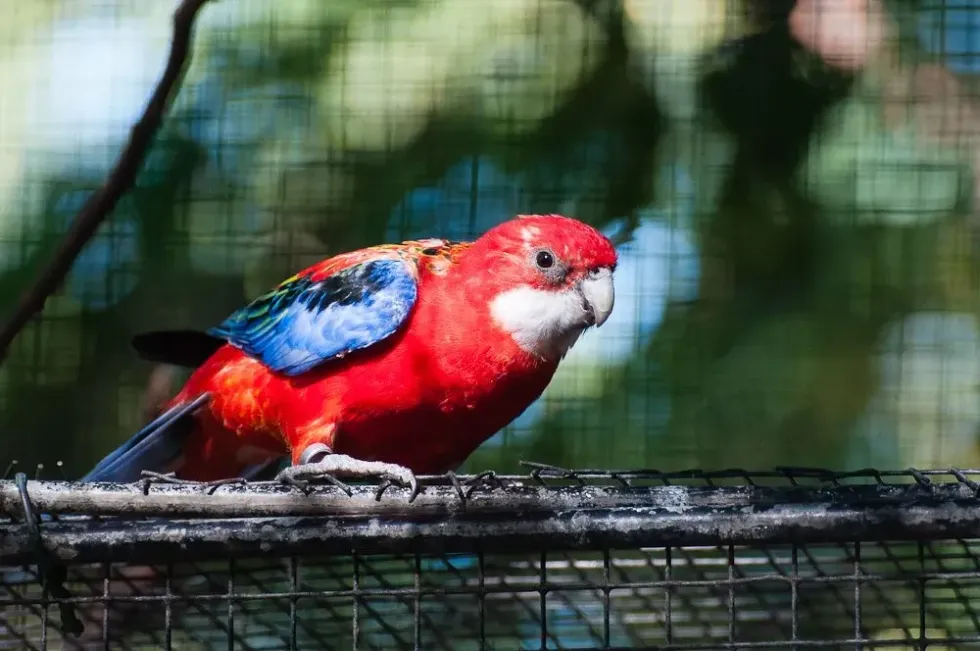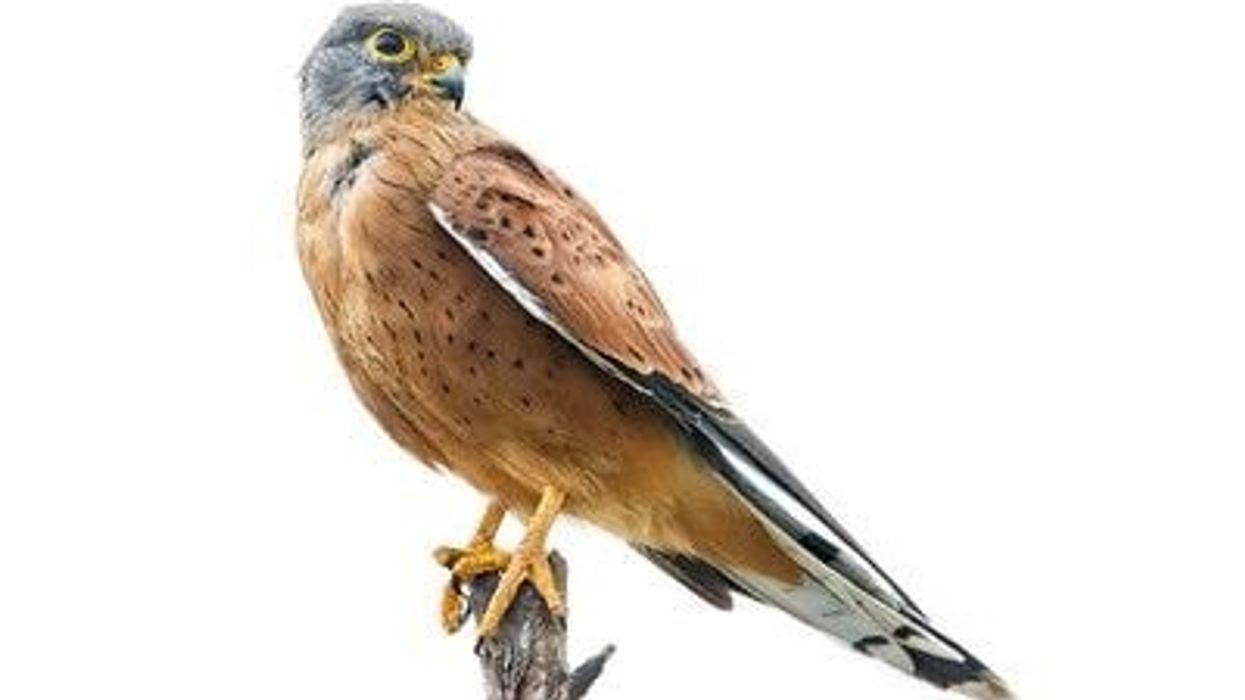The western rosella, Platycercus icterotis) as it is scientifically known, belongs to the Psittaculidae family and genus Platycercus. Western Rosella is the smallest species in the genus.
This rosella is only found in South west Australia and is found in Eucalypt forests and orchards.
There are two subspecies of this bird that are Platycercus Icterotis icterotis and Platycercus Icterotis xanthogenys and habitats of these subspecies differ while the first one inhabits areas with high rainfall and the subspecies Xanthogenys is found in drier habitats. The first is found on the South-west coast and the other in the wheat belt.
These are quite colorful species with differences in color depending on the sex. The head, neck, and underbody of the males are mostly red in color while the head, neck, and underbody of the females and are streaked or speckled with red.
Juveniles are mottled red and the females and juveniles look similar.
The males have a yellow cheek patch while this yellow cheek patch for females is smaller and because of this yellow cheek patch, this species is also called yellow-cheeked rosella. The reproduction or breeding of these rosellas happens around September to March in their natural habitat and otherwise, the breeding season starts from August to December.
They look for and choose a site like a limb or tree trunk usually for their nests. It has been recorded that these can also breed on hollow stump or post.
Only one or two eggs are laid and only the female incubates the eggs leaving the nest only for being fed by the male and the males tend to be around the nest.
These rosellas eat the seeds, fruits, flowers, insects. Rosellas are mostly seen in pairs and sometimes groups of around 20 rosellas.
It is interesting to know about this Rosella and if you are interested, read about spotted towhee facts and secretary bird facts too.
Western Rosella Fun Facts
What do western rosella look like?

There are differences in the color of the males and females of this species. The head, neck, and underparts of the male birds are mostly red in color, while females and young ones have the same parts streaked or speckled with red.
Their cheeks are yellow, and in females the yellow color on the cheeks is smaller and the color of the eyes, the iris specifically, is dark brown.
The back and the upper body are red and black or green, and these are sometimes referred to as red-backed western rosella.
The underwings of the females tend to be yellow or cream and even the young have yellow or cream underwings. The young look similar to the adult females but have more greenish plumage and they have a pinkish bill.
The upper part or the upper body and the rump of the tail are green or olive in color with a red-colored outline. The center of the quill feathers of the tail is blue and green in color and the outer tail is also bluish in color and has a white tip.
The bill of this bird is dull or pale blue-gray in color and legs and feet are also gray in color.
How cute are they?
Some people consider this bird cute because of its small size and colorful plumage.
How do they communicate?
These birds are considered to be quite noisy and sometimes high-pitched and can grasp a few words and are known to be good whistlers and can learn to whistle songs. They also produce mating calls to attract females and also perform mating gestures. Their vocalizations are known to be pleasant and sometimes high-pitched.
How big is a western rosella ?
The western rosella is the smallest member of their genus and is around 10-12 in (250-300 mm) long.
How fast can a western rosella fly?
The exact speed of this bird is unknown.
How much does a western rosella weigh?
This species weigh around 0.13-0.15 lb (0.061-0.07 kg).
What are their male and female names of the species?
There are no specific names for the males and females of the species.
What would you call a baby western rosella ?
There is no particular name for a baby western rosella and it can be referred to as chicks, young, or juveniles.
What do they eat?
Primarily these species are herbivores and eat the seeds of grass and other plants, fruits, flowers, insects, and their larvae too. These species feed on insects and larvae mostly during the mating or breeding season as it provides them or their bodies more protein. Their feeding occurs during the day in the foliage of trees and shrubs.
In captivity, they could be fed seeds like sunflower seeds and millet seeds and fresh fruits like apples, blueberries, oranges, bananas, and mangoes.
Are they dangerous?
It is believed that these rosellas if infected can spread Psittacosis to humans.
Would they make a good pet?
Western rosellas make good pets but require a lot of dedication from the owners as you need to spend a lot of time with these rosellas and there are chances of this bird being wild again. These are known to travel or be on your arms and shoulders and they do not like petting or cuddling.
The feeding of this rosella is also manageable. The crimson rosella, another species of rosella parrots, is most common as a pet.
Did you know...
The species of western rosella was first described and published as Psittacus Icterotis by C.J Temminck and Heinrich Kuhl in 1820.
Rosellas are known to be social but can be quiet, and can remain unobserved, even when feeding during the day in the foliage of trees and shrubs.
This species was killed as vermin as they used to damage or harm fruit in orchards or grain crops.
Rosellas are popular as aviary birds as they are not aggressive and their vocalizations are considered to be pleasant.
The use of a falcon call can help and be effective to deter a Rosella.
They are also known by the names Stanley rosella and yellow-cheeked rosella because of the yellow-cheeked patches and also very rarely referred to as red-Backed western rosella.
There are around eight species of rosella parrots and the most common rosella parrots as pets include crimson rosella and eastern rosella.
What is the difference between a parrot and a rosella?
Parrots are a variety of birds while a rosella is a species of parrot found in South western Australia.
Can a rosella parrot talk?
Rosellas are not really good talkers but they have the capability of learning or grasping or imitating few simple words but one interesting feature of these rosellas is that they are great whistlers and can learn to imitate songs through whistling.
Here at Kidadl, we have carefully created lots of interesting family-friendly animal facts for everyone to discover! Learn more about some other birds including hornbil facts or tawny eagle facts.
You can even occupy yourself at home by drawing one on our Western rosella coloring pages.










